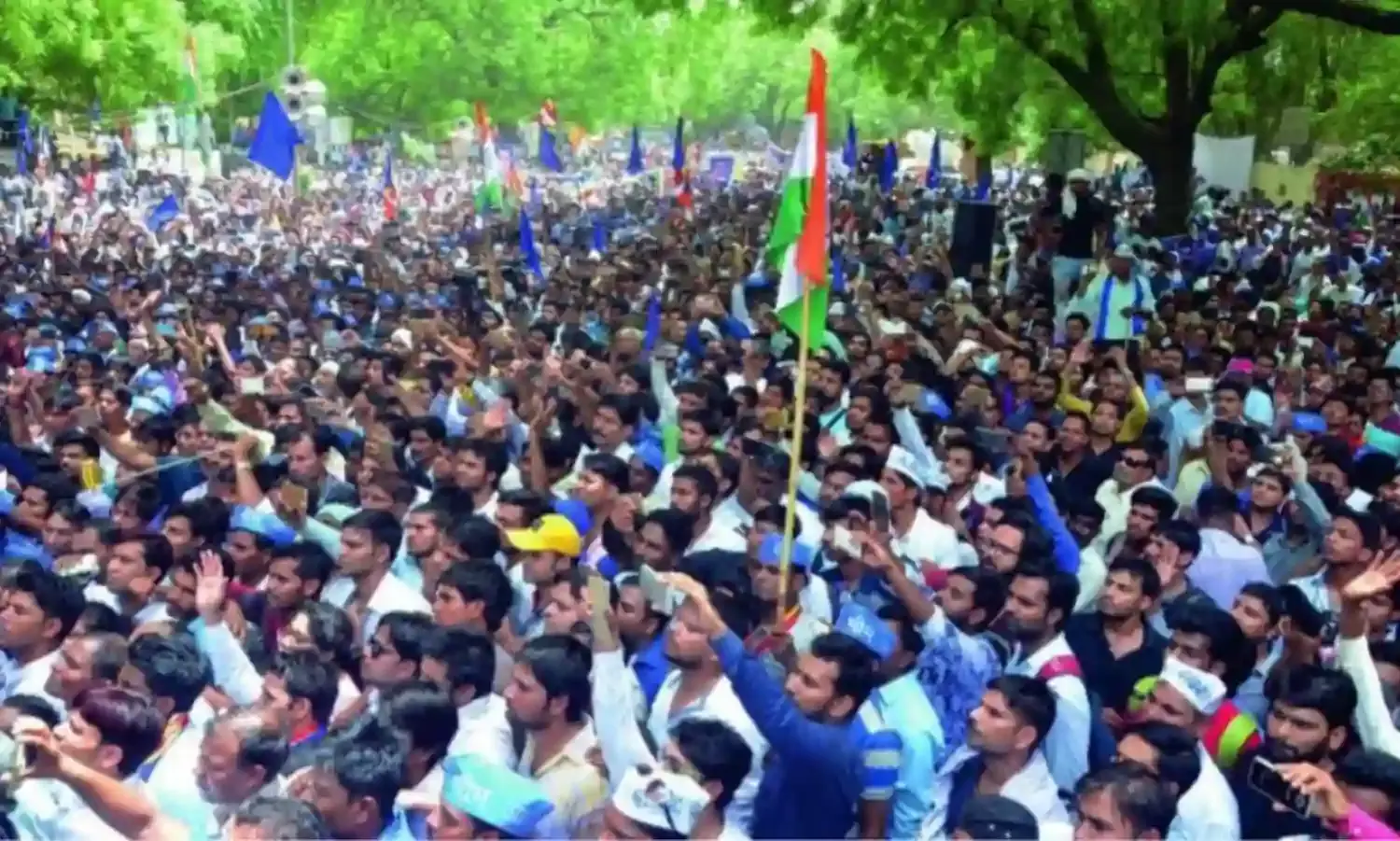Free the Freedom: Where Untouchability is Locked Away in Prisons
'Dalit Youth is the greatest barrier in the fascist project of Hindutva'

HARVARD, MASSACHUSETTS:The National Securities Act slapped on a Dalit leader of Bhim Army organization, Chandrashekhar Azad Ravan is indicative of the fact that the greatest threat to this country is Dalit humanism. Ambedkar was deemed as anti-national for his outward resignation of the Brahmin-Baniyas (caste-capitalists) nationhood. His followers are still forced to carry that mantle.
In a Brahmin-Baniya led India, the Dalit has always been criminalized and forced in the second class citizenry. In our private discussions or clishmaclaver, we blatantly justify to this by alluding to the criminality of this rogue—Dalit community.
Many parents belonging to the dominant caste regimen 'protect' their children from these society’s evils denigrating them as, the chura kids, dhed people, madiga thiefs and chamar goons. The reasons for aversion from these communities is given as cleanliness, disease, security and bad influences.
The dominant caste folks whom I meet in the Ivy league yards come with an overt excitement to talk to me as a Dalit scholar. They unapologetically confess of not knowing any Dalits or Adivasis in their lifetime. "We were all protected and sheltered from the outside world. Everything was surrounded by class and caste grid. I went to a private school and read about the Western enlightenment”, said a Harvard college sophomore from Calcutta.
Offering free and quality education to the children in ghettos is taken as an act against the national security by the state. Carrying out projects of social welfare for the ignored masses and fighting against the feudal casteist order by demanding justice and mooting for equality is a question of unbecoming of citizenship.
This raises the questions of the legitimacy of the state in India. If a Dalit assertion is seen as an act against the nation. Then surely, the Dalit is not a citizen of the same state. The Dalit is a denizen and a stateless entity in the Brahmin-Baniya nationhood.
The Dalit youth was kept unorganized since the 1960s. Post-Ambedkar very few Dalit student conferences were convened to uphold the views of the disgruntled youth. Perhaps, for this reason, we saw a powerful wave of strong, fascinating and captivating force of Dalit youth taking on the state for failing the Dalit constituency. The Dalit Panther spoke for the marginalized, oppressed, women and exploited. This emergence in the 1970s put the government dancing on its toes. Anti-National laws were slapped to the leadership of the Dalit youth movement. After the 1970s there was a total shut down of a national Dalit youth movement in India.
Azad is one of the current Dalit voices who has the potential to bridge that decades long gap. He has an appeal to echo the voice of the Dalit youth. The Dalits in current times are interpreting and reinventing themselves. This call of equal and radical reform is unwelcomed in Brahmin-Baniya country. Thus, Dalits are the outcastes—socially and nationally.
Criminalizing the Dalits
The case of Ravan also brings to light another important yet overlooked case of the incarceration of Dalit youth in the prison system. The criminalizing of minorities and historically oppressed is not a new trend. It has been an effective way to control the outcastes of the society. The untouchables are made untouchables of the civility by placing them in the corridors of untouchability. Prison system is a compound of untouchability—virile, harsh and psychic.
The corporatization of the world dovetailed with the historical continuities of oppression is met with the locking up of dissent. The trend of prison complexes is a reminder about our unwillingness to cohabit together as a common humanity. Those who preach religious ethics of godliness and oneness have been responsible for creating of such a suppressive order.
Foucault reminds us of the ‘docile bodies’ that have been subjected to such state and religion sponsored oppression. The monks in religious institutions were subjected to a prisoned order. So were the soldier and the minority communities of modern nation state. The Dalits in India alongside, religious and sexual minorities, women and working class are subject to this state oppression.
The trend of incarceration is seen in the backdrop of the emergence of the global capitalist order. Today, in Modi's India there is no singular movement in sight that takes the issue of incarceration of Dalits as their primary project. When the world movements are built around the repressive state violence and incarceration of the darker bodies, India is happily witnessing one-fourth of its humanity being disproportionately locked up in the prisons. We have forgotten about these precious lives who are forced to suffer due to poverty, or lack of adequate legal and financial support to make their case in the court.
The Abolition movement in America is initiated to eradicate prisons. It is led by formidable activists like Elaine Brown, former chairwoman of the Black Panther Party and Angela Davis who is convinced that the prison ecology is reproducing more delinquents. Rather abolishing crime from the society, prison assures the existence of such and encourages more prisoners. State-controlled entities, which are dominated by the traditional oppressors is another measure to enforce its sovereignty over the docile bodies of the subalterns—erstwhile legitimate properties of the oppressor groups.
There is no youth-led movement that engages with the outcaste bodies in prisons, no prison education project is undertaken by the educated masses.
The new era politics of the country will be Dalit youth politics. The Dalits are uniting, and the closet Dalits are coming out to dignify their pride. The enemy state knows it very well. Bhim Army will only grow by echoing the pulse of the Dalit rebellion. Locking up Azad and likewise the Dalits is locking up their condition.
(Suraj Yengde (@surajyengde) is a Nonresident fellow at the W.E.B. Du Bois Research Institute at Harvard.)


